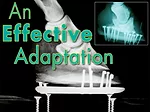Advertise Follow Us
Articles Tagged with ''navicular''
2016 International Hoof-Care Summit
Research Journal: May/June 2016
The information, ideas and opinions expressed are those of the author and do not necessarily represent those of the United States Department of Agriculture.
Read More
Dealing with Caudal Foot Pain
Effective farrier work is key in the prevention and recovery of navicular disease and tackling the all-important caudal foot pain syndrome disease process.
Read More
Summit Attendees Describe 105 "Wow" Factors
The eighth International Hoof-Care Summit offered plenty of valuable ideas that farriers and equine vets will put to use back home
Read More
Vet's Corner
An Effective Adaptation
Shoeing system designed to treat laminitis proves effective in case of a horse with a malformed navicular bone
Read More
Equine Anatomy
Last Of The Ligaments — Sort Of
There are actually many more, but these seven wrap up this look at the ligaments most important for shoers
Read More










